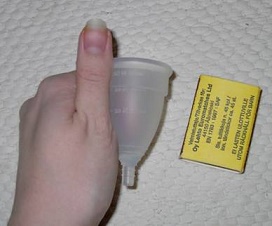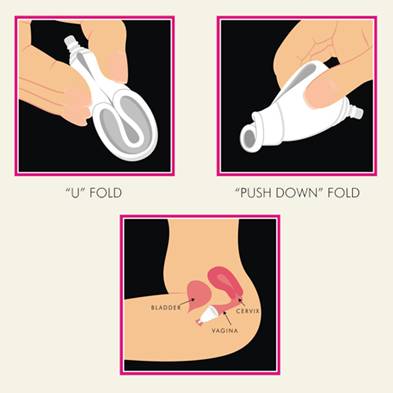Feminine products are generally made of non-organic cotton and several synthetic or toxic ingredients
- Components include rayon, polyester, propylene, polyacrylate, polyethylene,and fiber finishes. Synthetic materials so close to skin are not ideal, since they contain potentially harmful processing chemicals (made known because of TSS) and most do not allow good airflow around vaginal area (can cause rash and be a breeding ground for yeast and bacterial infection). Non-organic cotton is heavily sprayed with many known carcinogenic chemicals.
- Dioxin content is of particular concern in endometriosis and infertility. An endocrine disruptor and a known carcinogen, dioxin disrupts estrogen and can accumulate in our bodies. Typically produced in industrial processes using chlorine to manufacture herbicides and pesticides, process pulp and bleach paper (E.g. feminine care products, facial tissues, toilet paper and diapers, all of which touch and can contaminate body tissues). In monkeys, dioxin has been shown to increase/promote endometrial tissue growth, which is of concern in endometriosis and infertility.
Tampons have a risk of Toxic Shock Syndrome (TSS) because they are worn vaginally for long periods (no pun intended :) ) and swell as they absorb blood
- TSS is a bacterial infection linked to making tampons more absorbent -Tampax tampon label reads: "The risk of TSS increases with higher absorbency "BTW, the risk is obviously increased by leaving overnight with a heavy flow (this used to be warned against on tampon products, but has now been removed). Risk of TSS is generally low 3-4 in 100,000.
Expensive and environmentally unfriendly
- One Menstrual cup lasts for years and costs the same as the average woman will spend on disposable sanitary protection in 3-6 months
- Back in 1998, 6.5 billion tampons, and 13.5 billion sanitary pads plus all of their packaging ends up in landfills and sewer systems - according to waste consultant Franklin Associates. The high plastic content of sanitary pads (and diapers) ensures they remain in our environment for centuries as they are neither biodegradable nor recyclable. Disposal of used sanitary products increases pollutants in the sea from sewage and air pollution from incinerators.

- It is a type of cup or barrier (~ 2" long) worn inside the vagina during menstruation to collect rather than absorb menstrual fluid
- A light seal is formed with vaginal walls. This allows menstrual fluid to pass into the menstrual cup without leakage or odor. This seal is released for removal, allowing you to empty the contents, rinse/wipe and reinsert.
• Convenient. Can be used overnight and when traveling, swimming or exercising.
• Comfortable - designed to sit lower than a tampon, but it can not be felt when properly inserted;
• Safe. When used as directed; no health risks related to their use have been found

How to insert Bell-Shaped Cup
Two types of menstrual cup currently available:
- Bell-shaped cup
• Made of rubber, silicone or TPE (Most cups are silicone because of hypoallergenic properties)
• Reusable for up to 10 years
• Must be removed before sexual intercourse
- Soft, flexible cup resembling diaphragm
• Made of polythene
• Disposable
• May be worn during intercourse (although not a contraceptive)
- Small or large size. Small size recommended for women <25 who have not given birth vaginally, otherwise the large size is recommended;
- A shorter cup may be needed if a woman's cervix sits particularly low
• Some women find menstrual cups more difficult to insert and remove than tampons - persisting for about 3 months usually wins the battle;
• A little cleaning required
• Does not absorb vaginal secretions - like tampons do and so does not cause dryness or irritation;
• Collects at least double the amount of blood as a "super-absorbent'tampon" - and therefore doesn't need changing as often
• More cost-efficient and environmentally friendly - reusable cups cost ~$35.
• Avoids potentially harmful chemicals in pads and tampons
- The Keeper- manufactured in the U.S. this is made from rubber (latex), otherwise identical to the Mooncup below;
- The Mooncup - UK-manufactured; called MCUK ®in the USA, but the product is identical and made from silicone (for those with latex allergies). This site sells MCUK®for $30 including free delivery (in 2011). The Mooncup is designed to be folded and inserted into the vagina - then removed, rinsed and reinserted up to every 8 hours.
- Meluna - German brand, made out of TPE (thermoplastic elastomer).
- Divacup - 100% silicone sold here